The Eighth Continent – Madagascar – Part 2: Antananarivo
The City
I think it is right to say that I did not have a proper picture in my head about Antananarivo, the capital of Madagascar. Or rather the picture I had was not much different to that of what I had in mind about some other cities I’ve been, in the developing world. If I was asked before I travelled, I would’ve probably said that I expect it to look like Chennai.
One of the first things that I noticed as my taxi rolled out of the car park at the airport was how small and narrow the roads are. This was quite puzzling to me as Madagascar is a pretty large country. And one thing large countries usually do is to generously make use of space. The reason for this was soon apparent; Antananarivo is a hill city. Probably owing to the altitude (1200m), the lower temperature bounds (in early mornings, late evenings) for the city ranges between 10-17C throughout the year.
The name Antananarivo means “The city of a thousand”. It is widely assumed that this refers to the garrison of a thousand soldiers king Andrianjaka posted in the city when he invaded it and made it his capital. The name prior to king Andrianjaka’s rule is Analamanga meaning “the blue forest”. Today, the city is host to about 1.5 million of the 25 million total who live in Madagascar.
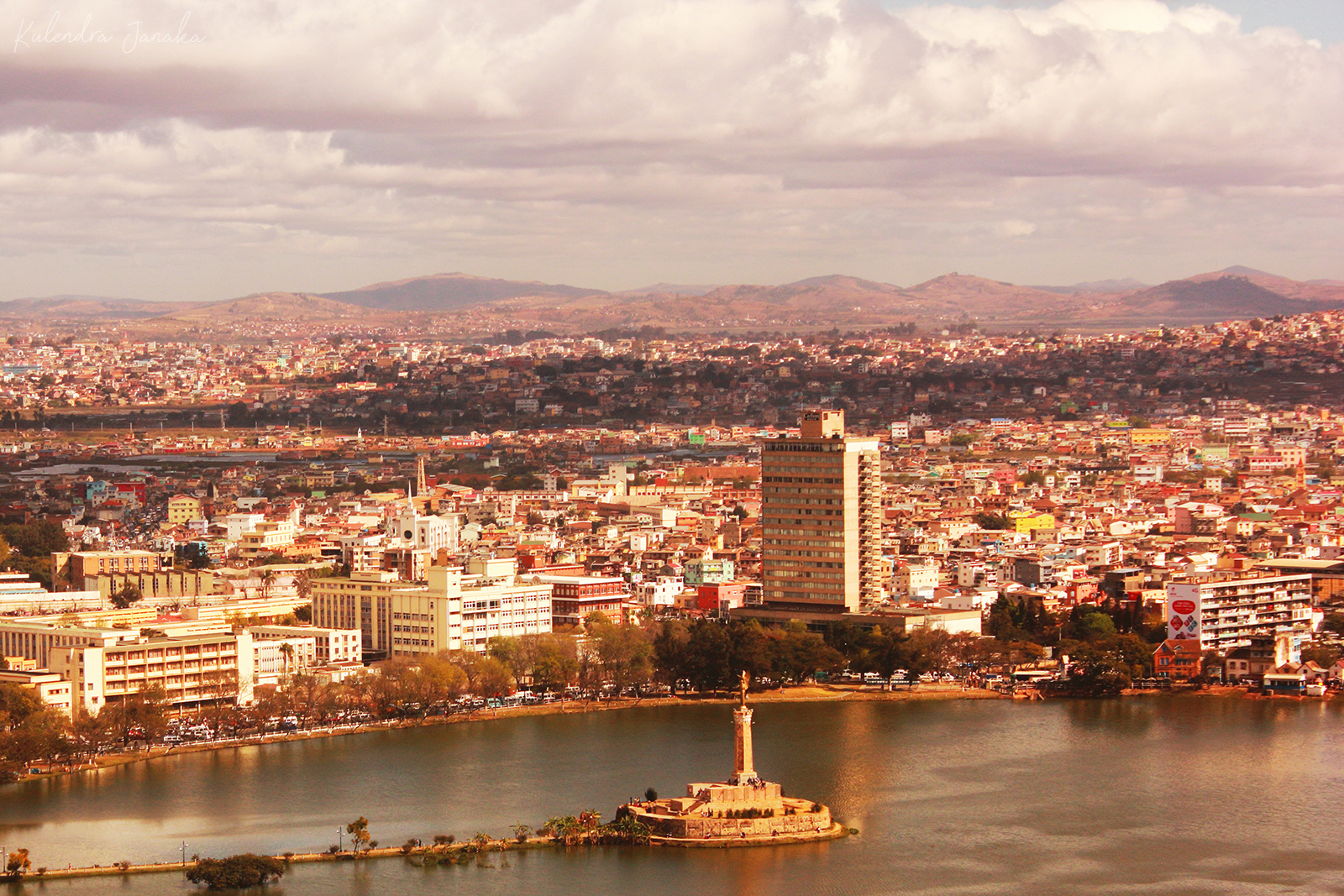
Antananarivo, the city of a thousand 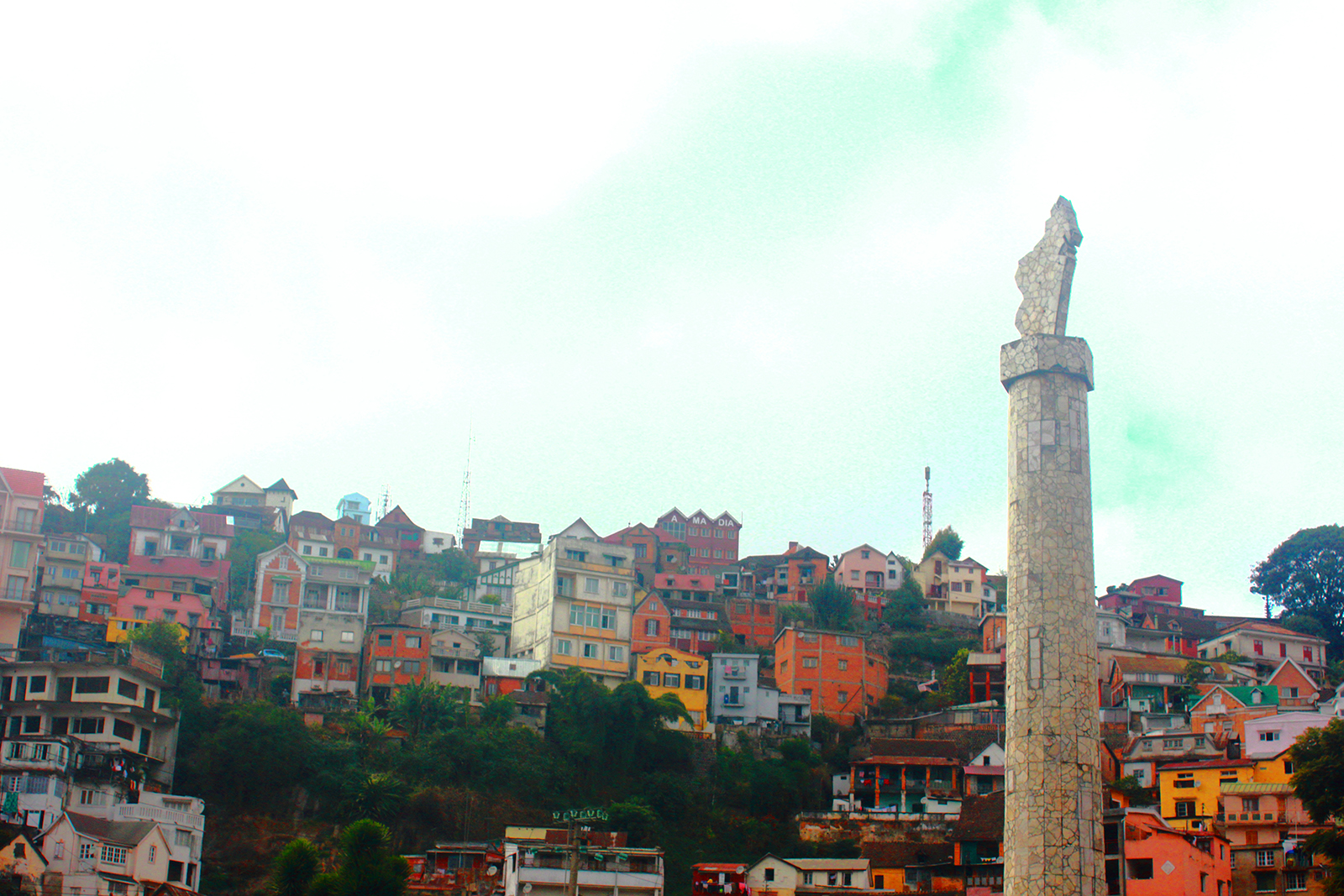
Building on to the hillside is a popular theme in “Tana” 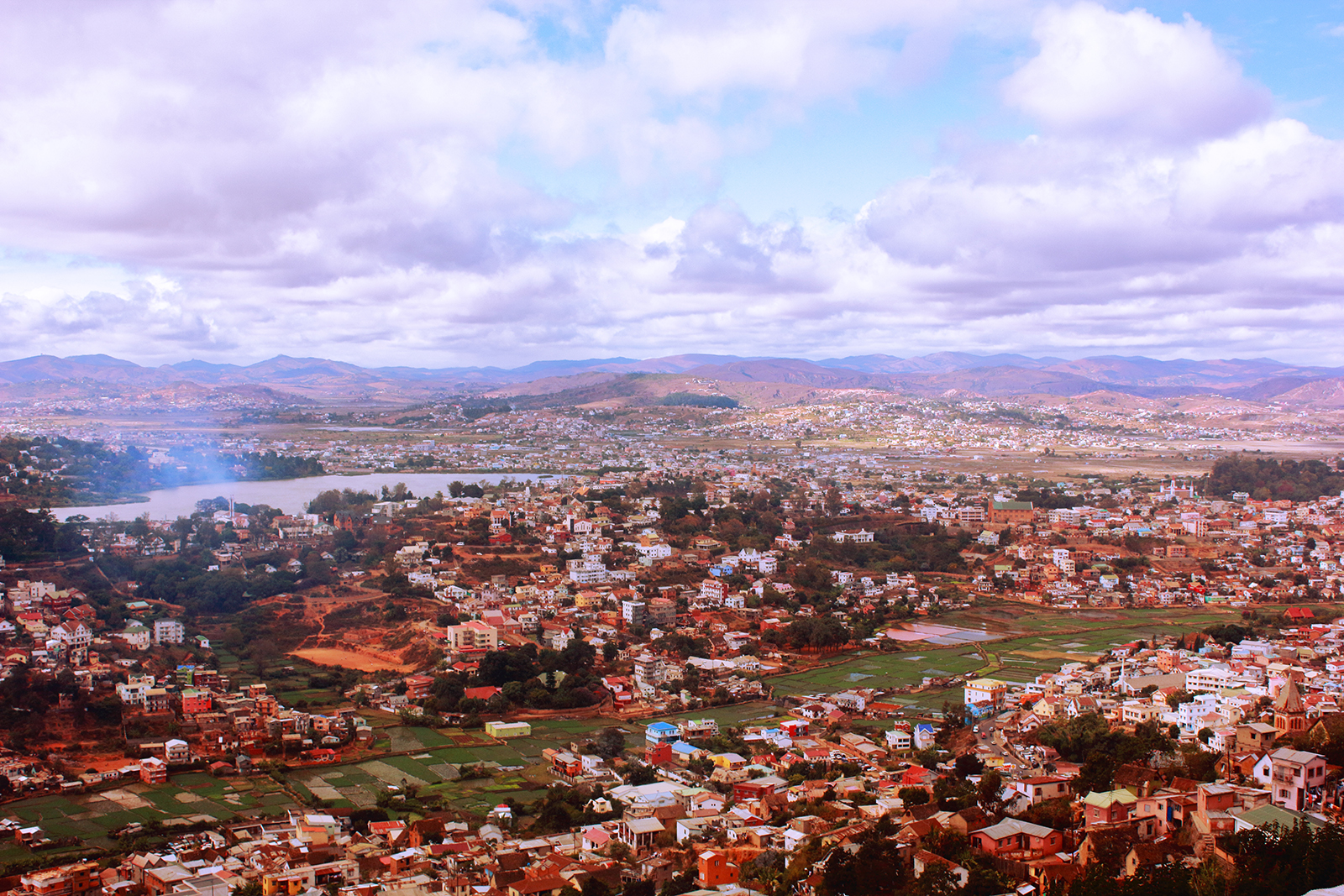
The city, while having a 1.5 million inhabitants, still sports rice fields right in the middle of it. 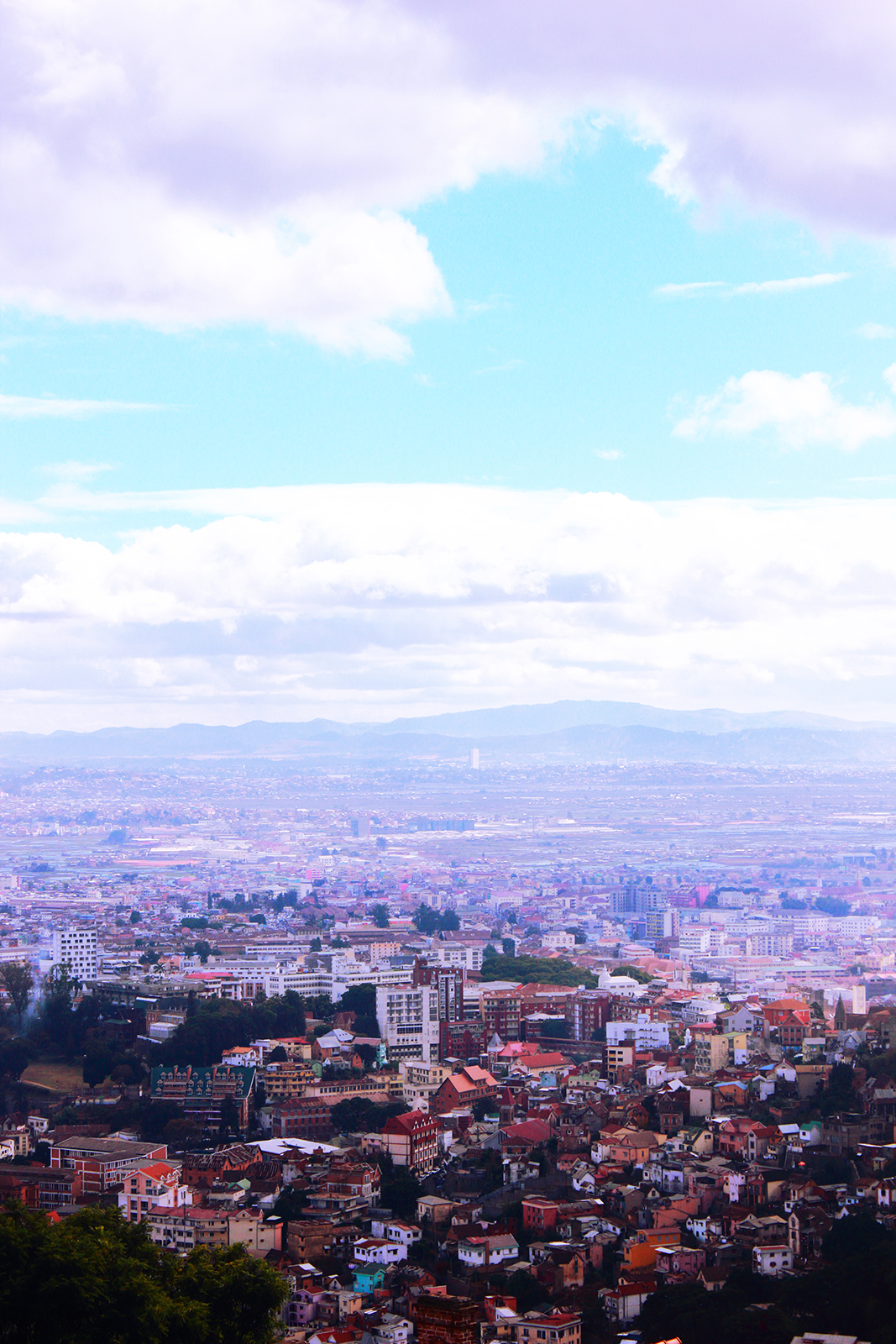
From afar, you could never say Madagascar is one of the poorest countries in the world.
When I was getting ready to go to Madagascar, one of the first things that I was told was that it might be a bit dangerous. However landing in Ivato and going in to Antananarivo, I did not feel particularly unsafe. Of course I did take the precautions I would expect any traveller to take; keep the valuables away from you/locked up, don’t flash around expensive items, keep the backpack well tied up, keep your hands free from phones and cameras so you don’t get distracted etc.
What I did feel about Antananarivo is that it looks very similar to other South and South East Asian cities I’ve been to. Some of the scenes such as the roadside food stalls and vegetable sellers are still a familiar scene even back home in Sri Lanka if you travel outside the main cities.

The vegetable sellers with their makeshift stalls. 
Some houses double up as road-side food stalls, providing an additional income to the families. 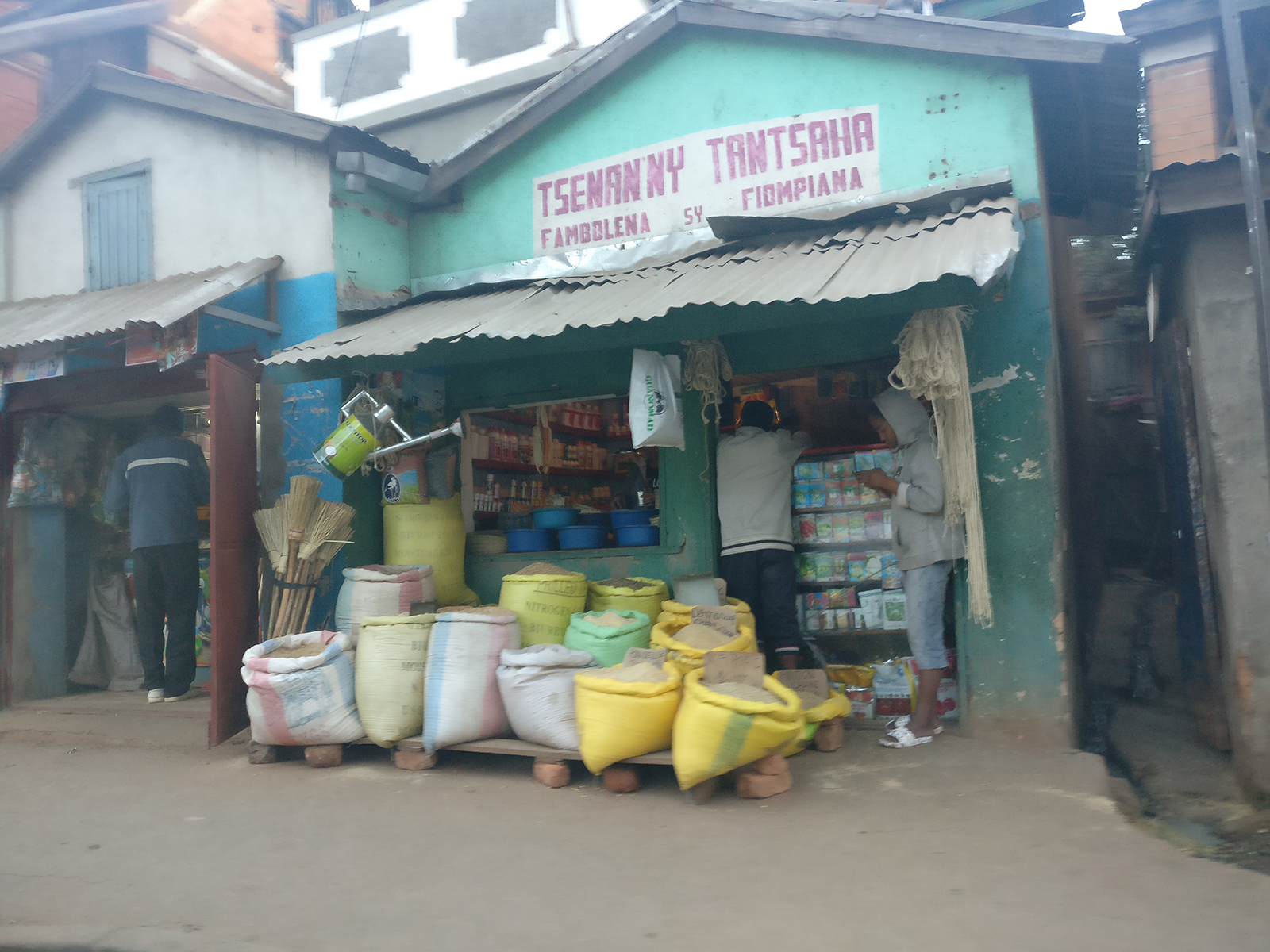
Road side grocery stores are a common occurance even back home in Sri Lanka
This doesn’t mean there weren’t any surprises. While I have known and seen small vans being part of the public transport in African countries, I had never seen one where the passengers were loaded from the back. It still puzzles me as to why you wouldn’t load them from the side doors. Nor did I expect to see a road side sale of paintings. But there you go!

Two men play Fanorona on a busy roadside. The game has some similarities to the precursors of checkers. 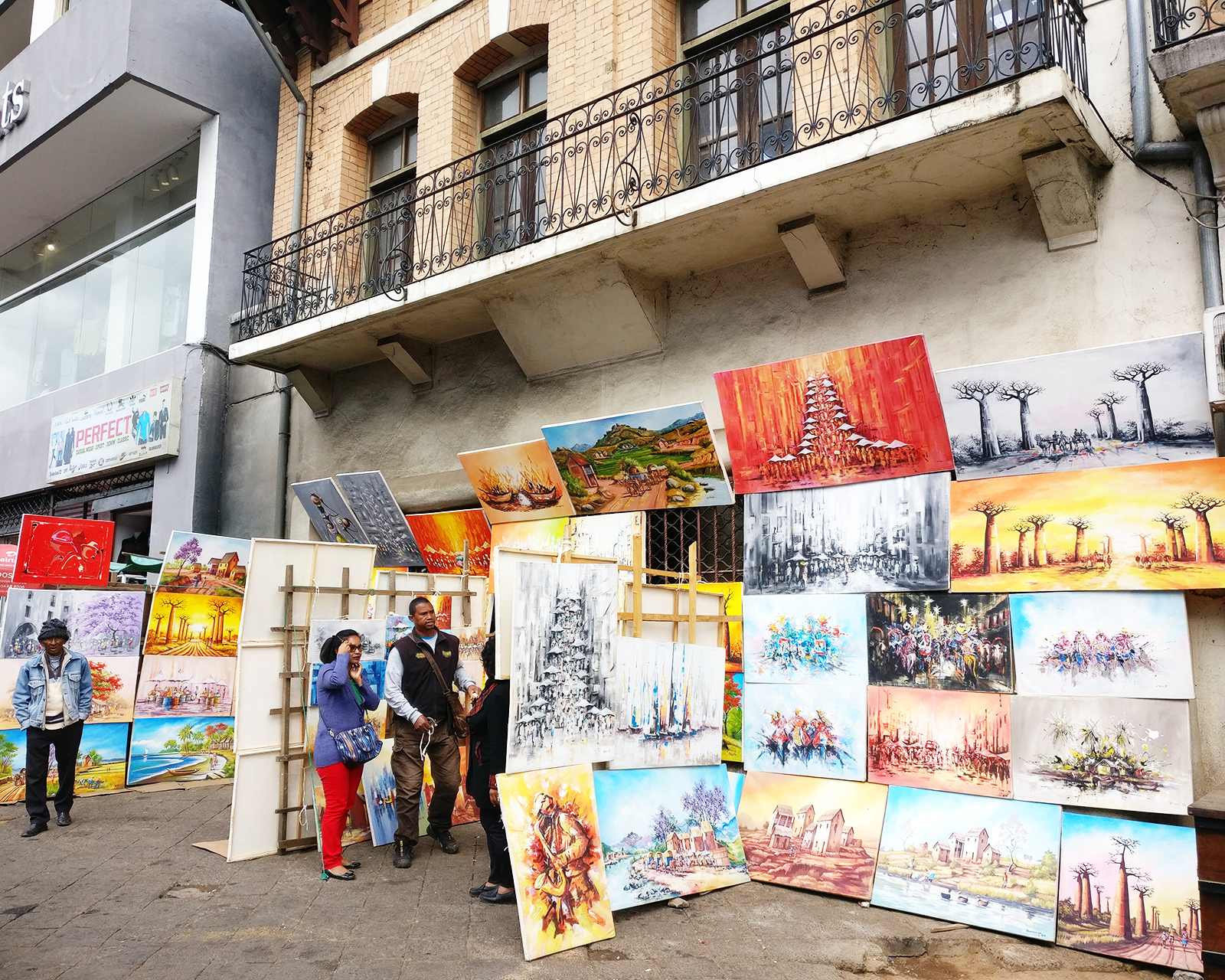
With over 70% of the population below the poverty line, I was quite surprised to see an art/painting sale on a side of a road. I hope it works out well for this artist.
Rova Compound
Rova Compound, better known as Ranavalona’s palace is one of the last remnants left from the times of the Malagasy kingdom. The compound consists of a wooden palace encased in stone (more about that later!), tombs of the kings and queens, a Christian chapel and also used to contain the official residence of King Radama I.
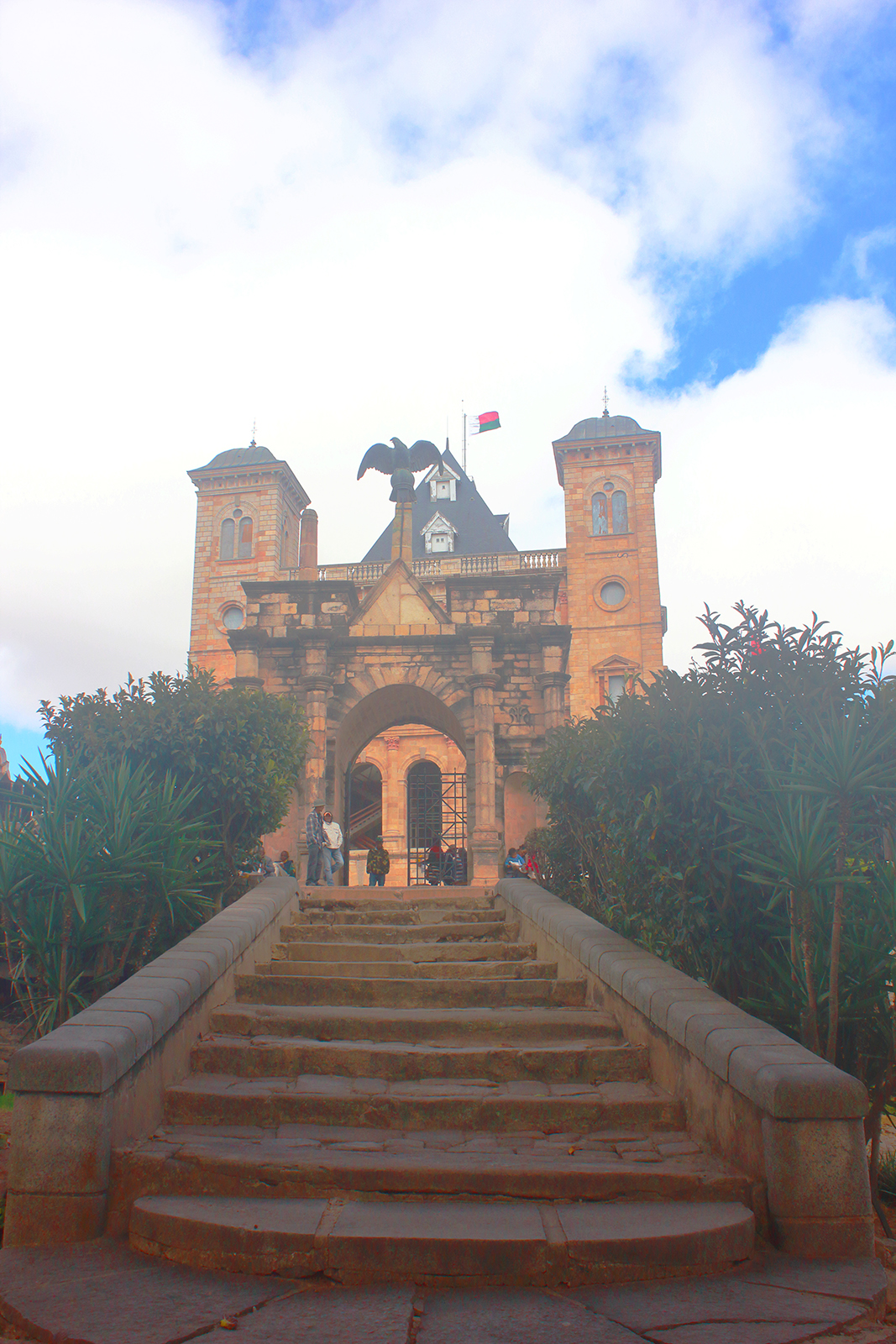
Entrance to the Rova Compound. The gate has a bronze eagle, the sign of military force, and a phallus to the left of it (seen from this angle), a symbol of nobility. 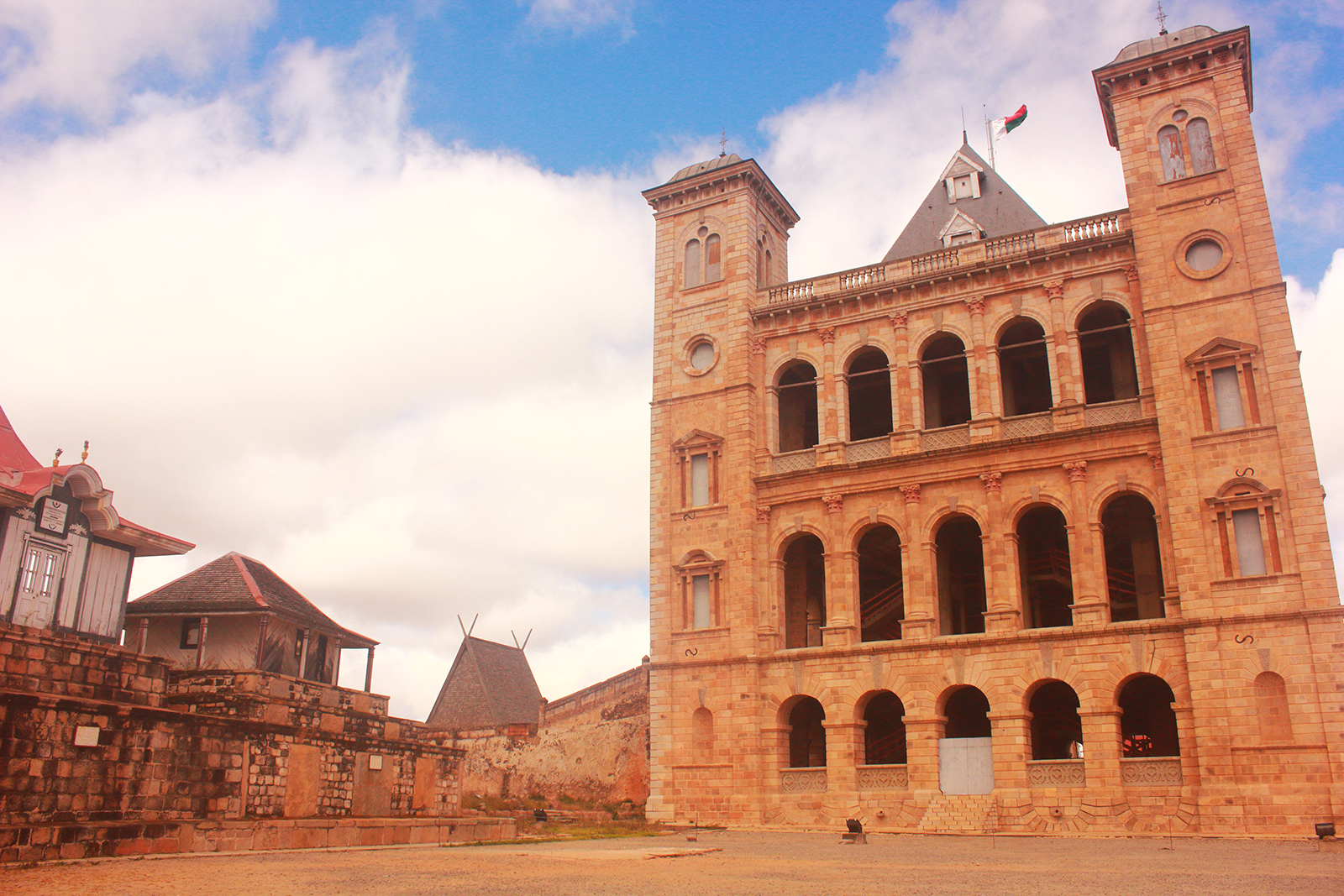
The stone encased castle was reconstructed after the 1995 fire. 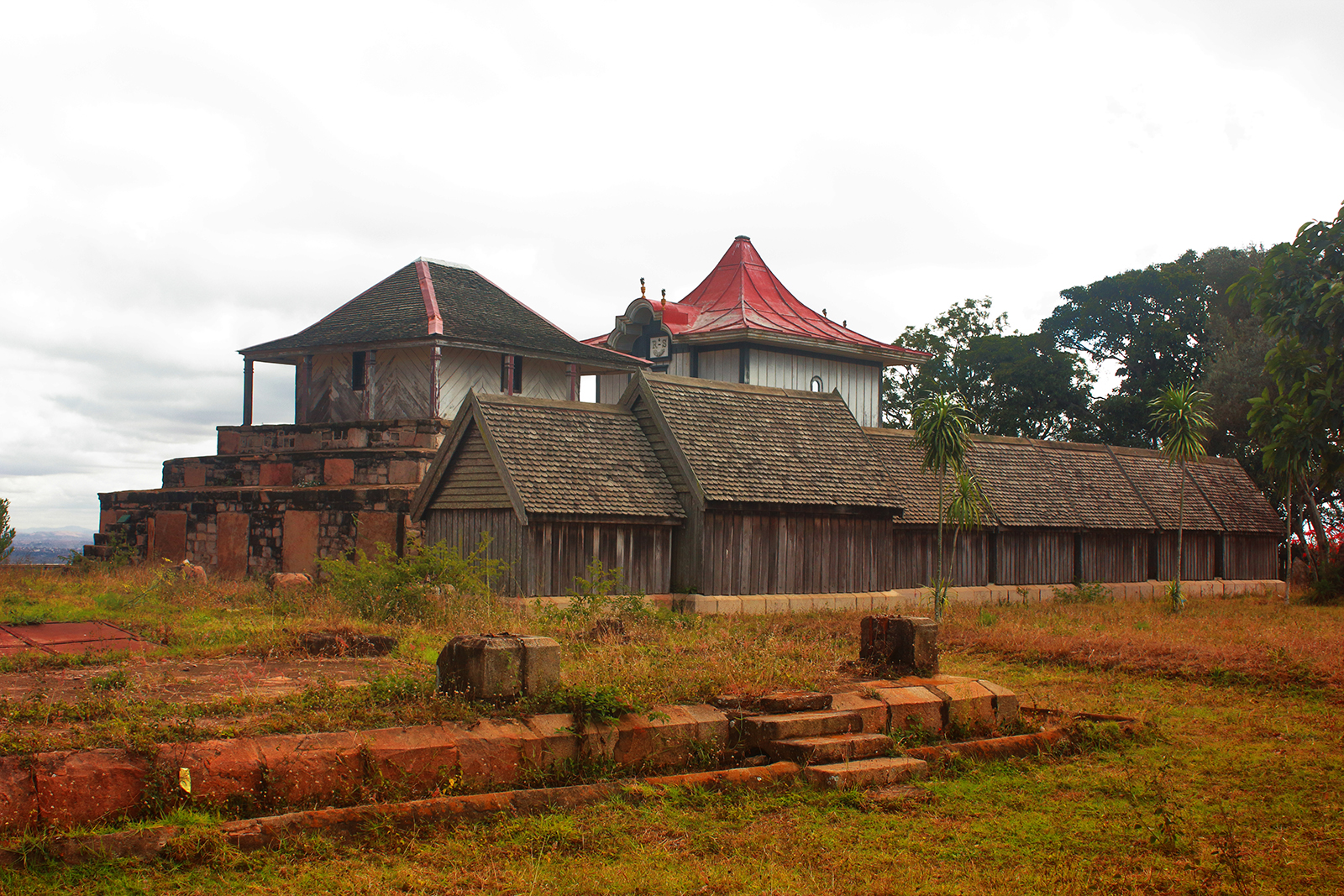
Royal tombs. Each tomb housing contained multiple bodies of the royal family. 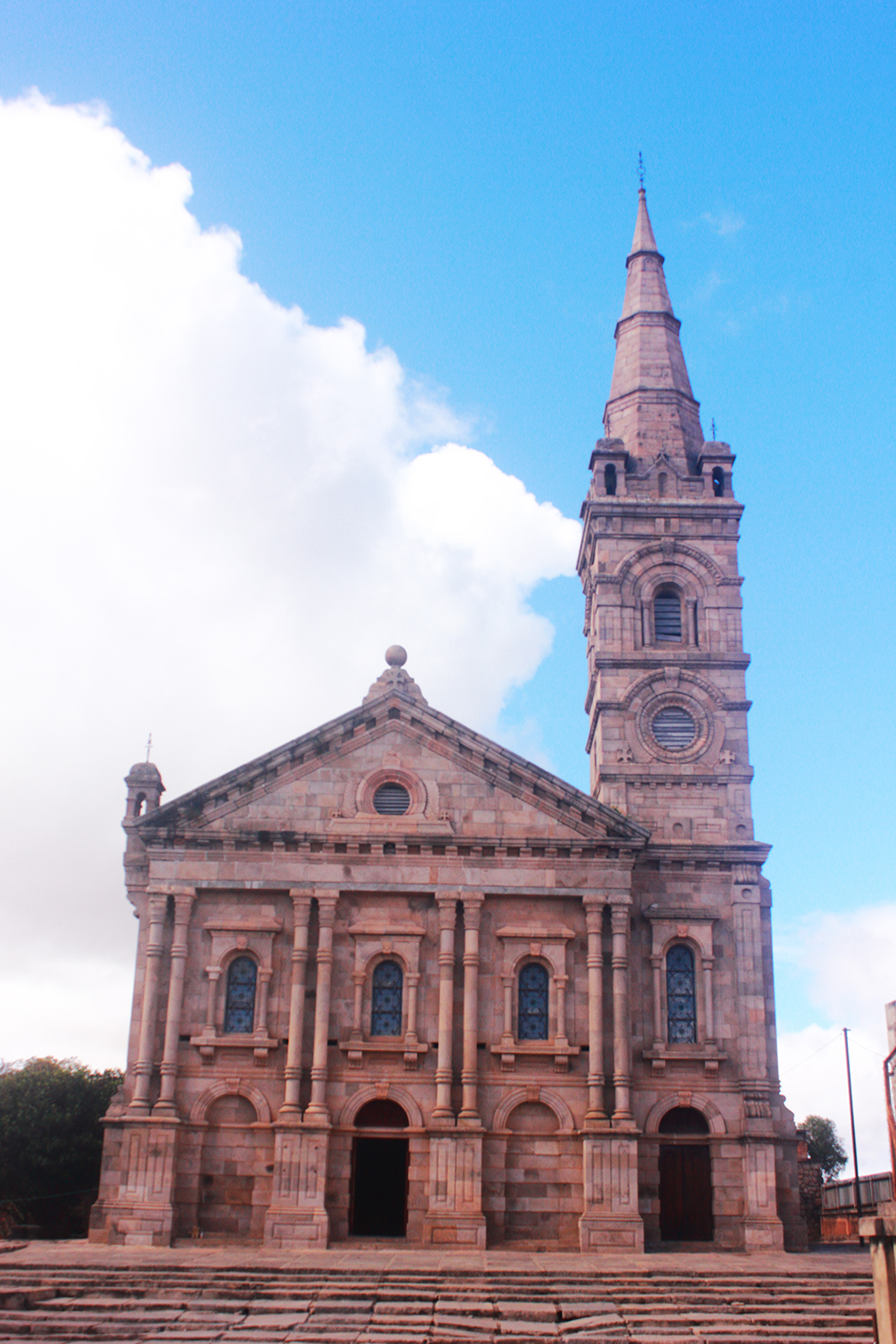
A Christian chapel was built during the reign of Ranavalona II, the first queen to convert in to Protestant Christianism
Malagasy buildings are mostly based on wood. As per one of the guides I met in Antananarivo (and later some what verified), stone was used by Malagasy only as a building material for tombs. This practice was relaxed somewhat during the time of Queen Ranavalona II and allowed the Scottish missionary James Cameron to build a stone building that encased the original wooden building. During 1995 a fire broke out that destroyed all the buildings in the Rova Compound. The stone building that encased the palace was also damaged due to the stones cracking up from heat. The buildings have since been reconstructed but certain buildings such as the official residence of King Radama I, is still no where in sight.
The City, Again
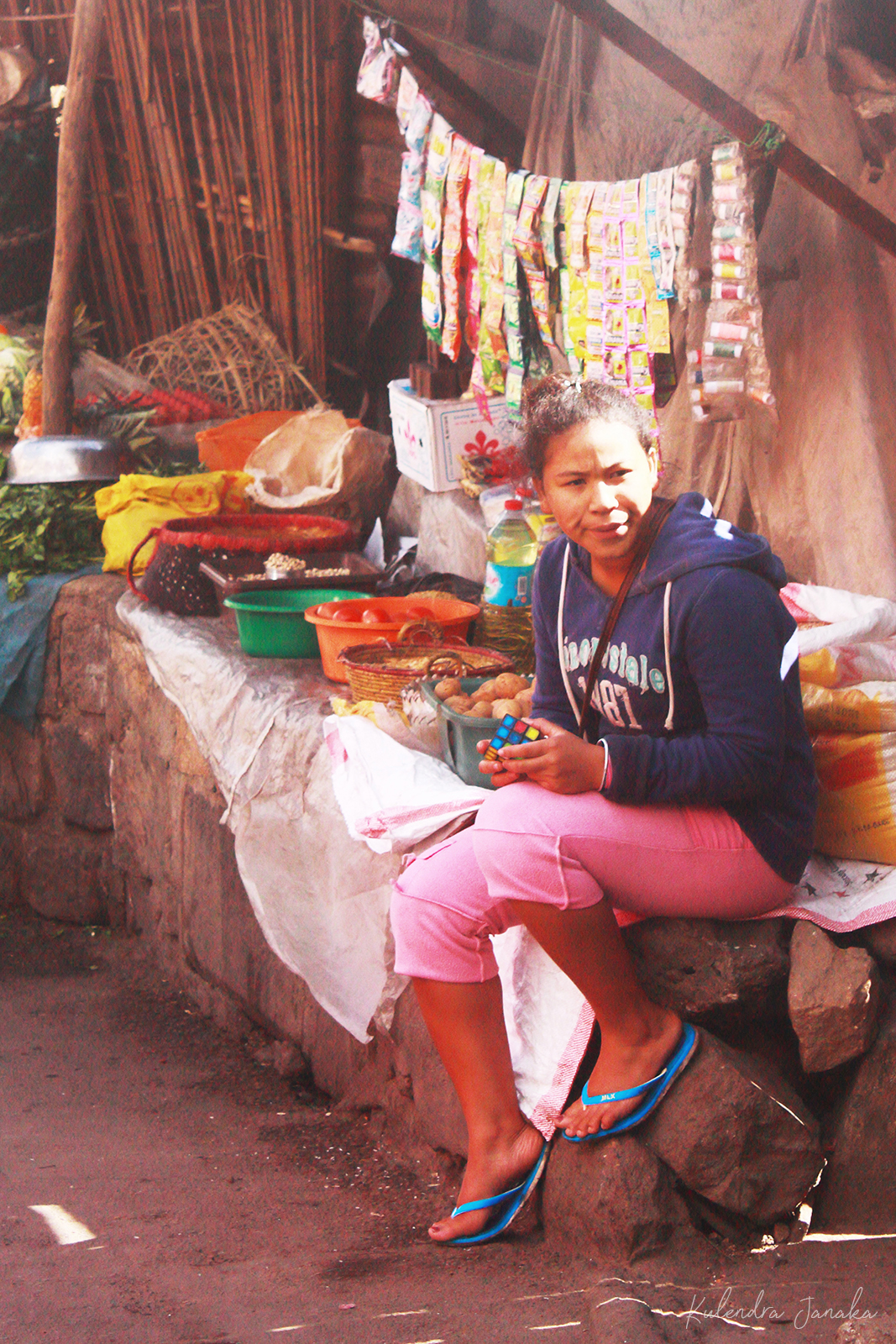
A young girl probably helping with her family’s shop, plays with a Rubik’s till she makes another sale. 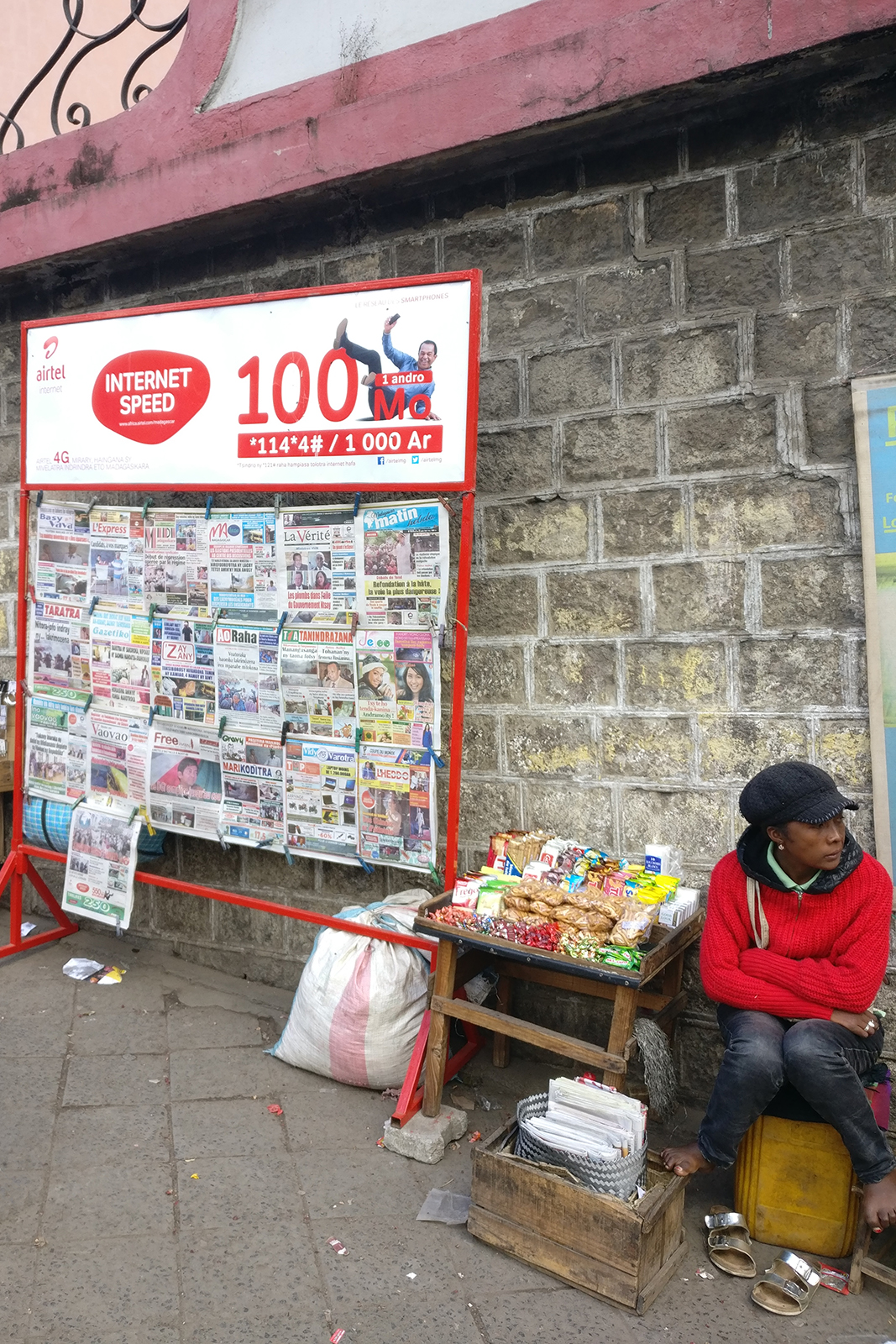
The irony. A broadband mobile provider is advertising about 4G internet on a newspaper stand. 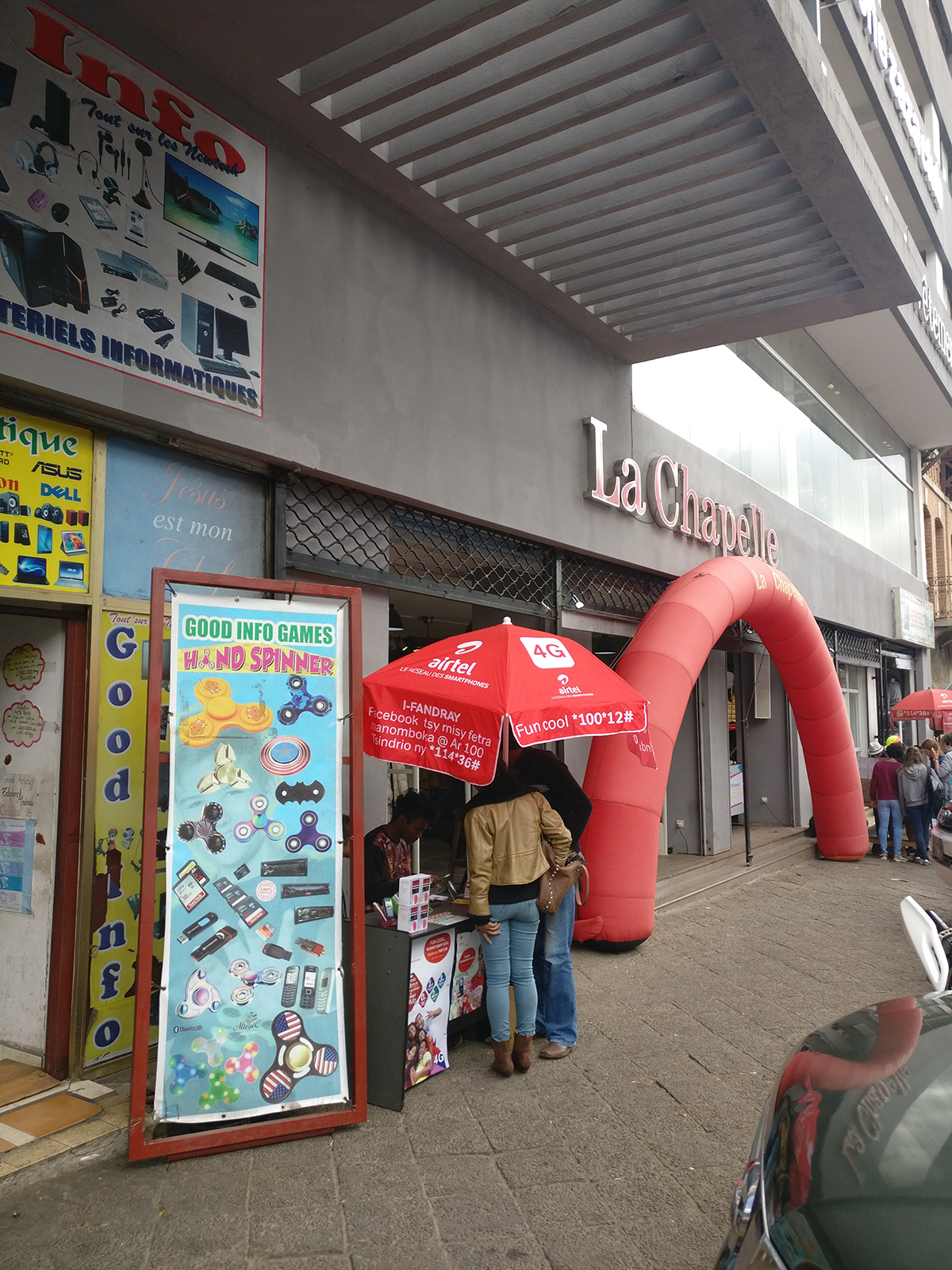
As distant as Madagascar is, the global trends are present here too. I was surprised to find a store advertising of fidget spinners. 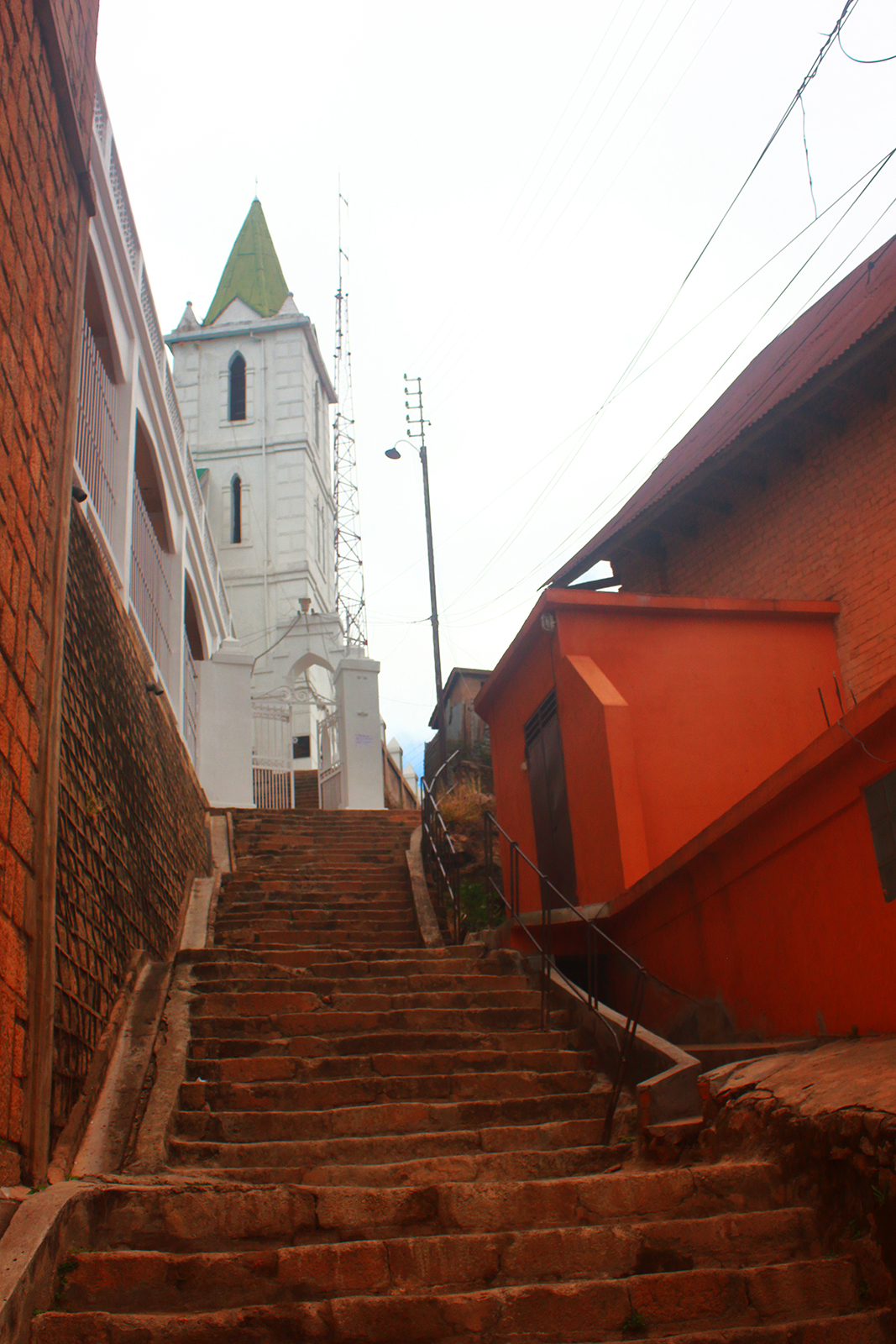
Winding roads and churches are a common sight in Tana. 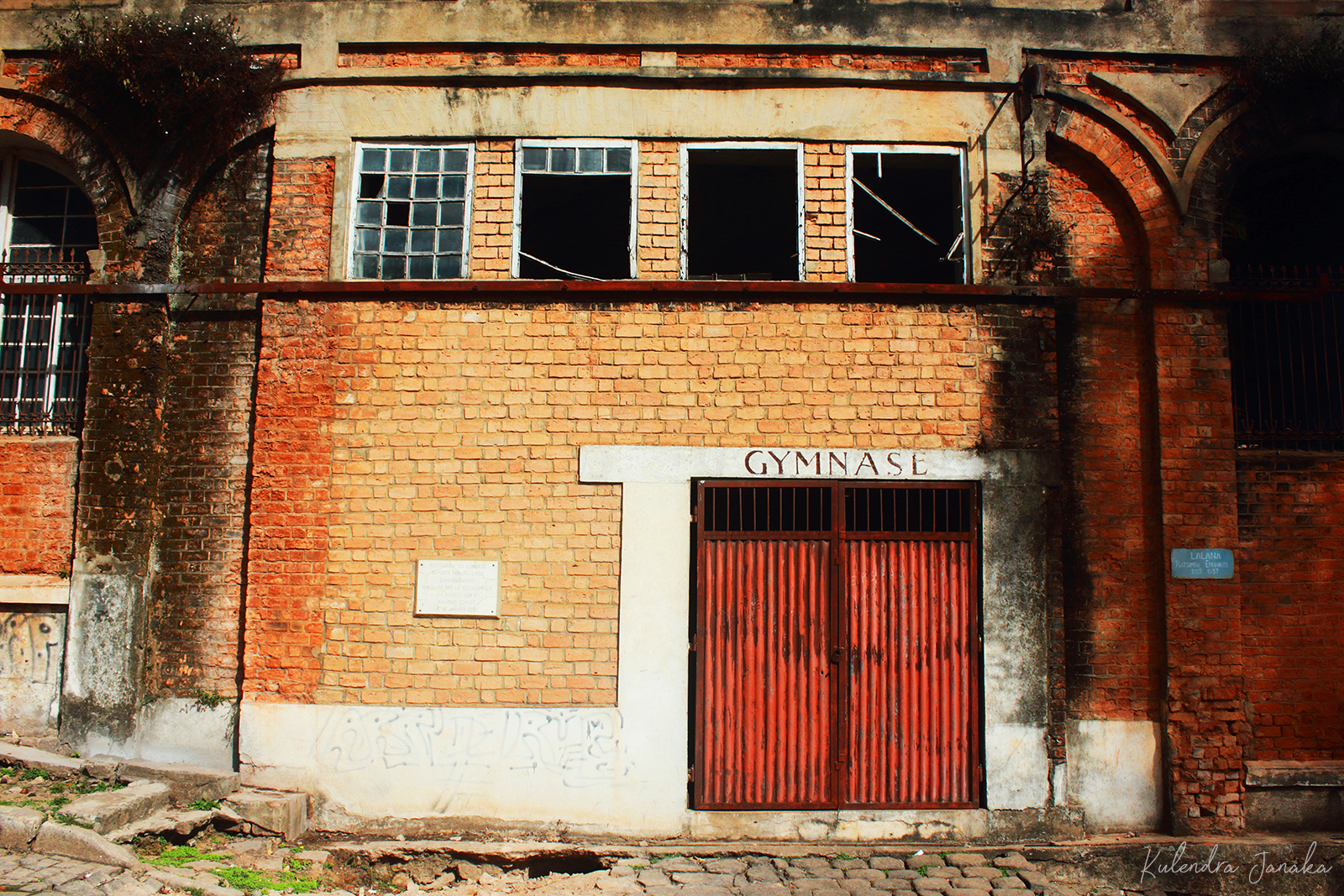
A derelict gymnasium in front of a playground.
As I walked back from the Rova Compound, I took the long road back to my hotel. My guide suggested that I take the busier main roads owing to safety, but as I said earlier, I could not spot anything that was out of place. And I am glad that I took that path. I ended my first day in Madagascar, getting ready for my next adventure of travelling 12 hours to Morondava.